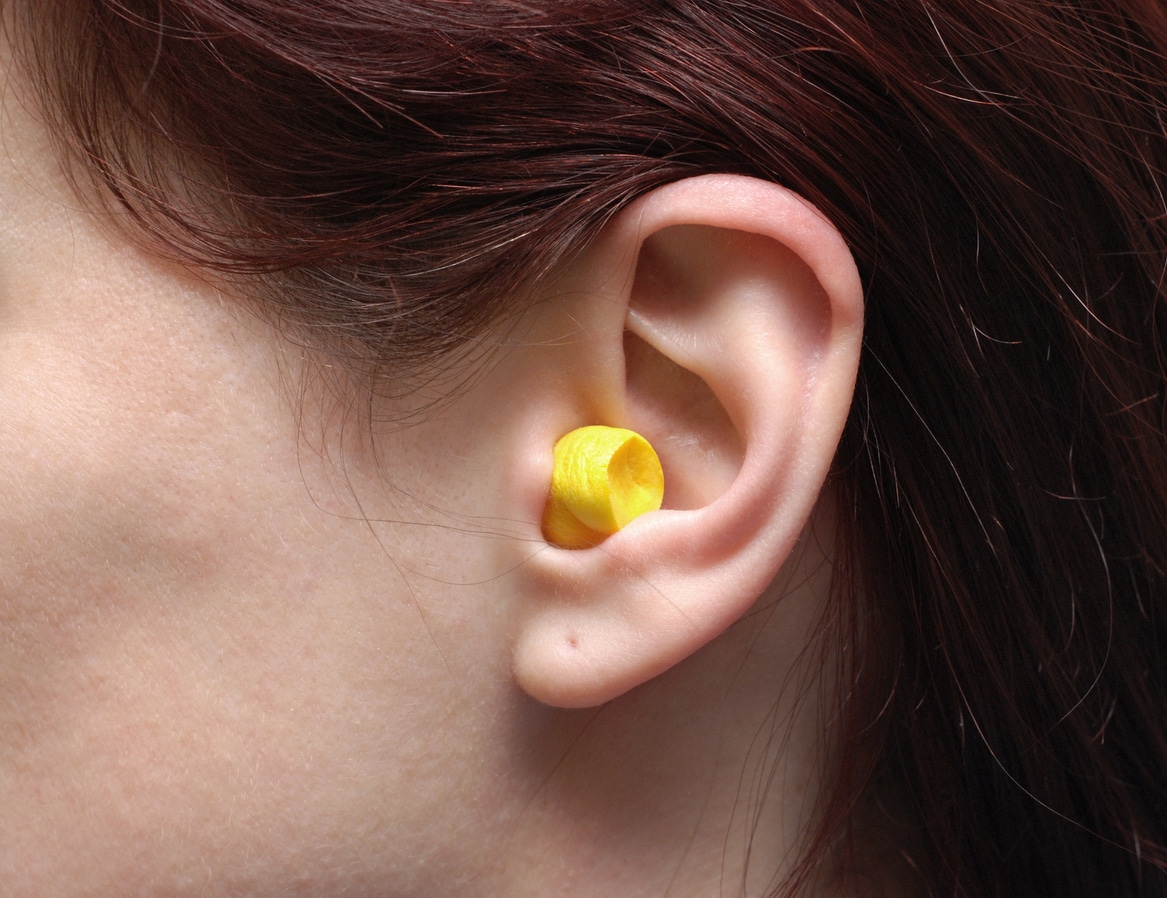Hearing loss can occur gradually through prolonged exposure to loud noises or suddenly due to an intense noise burst. The severity of the impact depends on the decibel level, with sounds exceeding 70 decibels (dB) posing a threat over time while those surpassing 120 dB causing immediate damage. You may wonder how to protect your hearing, and a great tool is by using earplugs.
When To Wear

Preserving your hearing hinges on taking breaks from continuous loud noises and utilizing hearing protection. A general guideline is to wear earplugs or other protective gear whenever the noise level consistently exceeds 85 dB. To put this into perspective, the hum of a refrigerator typically registers at 40 dB, while conversation typically lands at 60 dB. Surprisingly, there are numerous situations where earplugs can be beneficial, extending beyond what you may consider.
Times to wear earplugs include:
- Occupational Settings: Occupations involving loud machinery, such as those in factories or construction sites, often require consistent use of earplugs to minimize the risk of hearing damage.
- Concerts and Events: Whether at Hampton Coliseum or any other venue, concerts are prime scenarios for earplug use. Most concert music falls within the 110 dB to 120 dB range, making ear protection necessary.
- Outdoor Chores: Routine outdoor activities like yard work, gardening or using equipment like lawnmowers and leaf blowers expose individuals to potentially harmful noise levels, necessitating the use of earplugs. Lawn mowers and leaf blowers typically reach to between 80 and 85 dB.
- Power Tool Use: Employing power tools such as saws, drills and sanders poses a risk to hearing health. Earplugs are advisable to mitigate this risk and ensure protection during DIY projects.
- Living or Working Near Noisy Areas: Residing or working in proximity to a bustling construction site or a noisy highway may also warrant the use of earplugs to shield against constant high-decibel sounds. City traffic sounds from inside a car can be between 80 and 85 dB.
It’s important to note that two sounds with equal intensity aren’t necessarily as potentially damaging. The length of exposure or amount of exposure within a closed space is important to consider. It’s also important to select the appropriate type of hearing protection based on the activity. A hearing specialist can guide you in finding the right earplugs tailored to your specific needs.
To delve deeper into hearing protection or schedule a hearing test, contact Hampton Roads ENT ~ Allergy to schedule an appointment.
